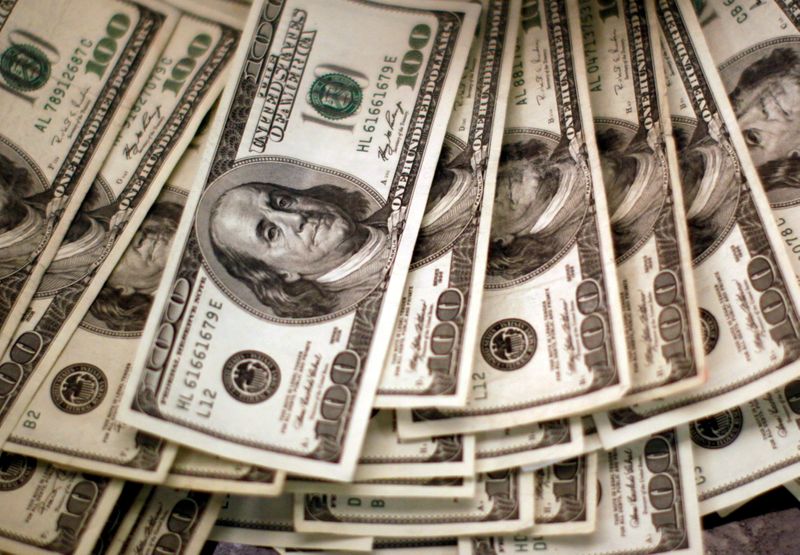WORLDWIDE: HEADLINES
Growth in China’s June services activity falls to 14-month low – Caixin PMI

Growth in China’s services sector slowed sharply in June to a 14-month low, weighed down by a resurgence of COVID-19 cases in southern China, a private survey showed on Monday, adding to concerns the world’s second-largest economy may be starting to lose some momentum.
The Caixin/Markit services Purchasing Managers’ Index (PMI) fell to 50.3 in June, the lowest since April 2020 and down significantly from 55.1 in May. It held just above the 50-mark, which separates growth from contraction on a monthly basis.
China’s official services gauge had also shown a marked slowdown in June, though it remained well in expansion territory. The private survey is believed to focus more on smaller companies.
Coupled with a slowdown in the manufacturing sector, analysts say the PMI survey findings suggest that pent-up COVID demand may have peaked and China’s robust economic rebound from the crisis is starting to moderate.
Though slower to recover from the pandemic than manufacturing, a gradual improvement in consumption in recent months had boosted China’s services sector.
However, a COVID-19 outbreak of the more infectious Delta strain in the export and manufacturing hub of Guangdong since late May and the subsequent imposition of anti-virus measures have weighed on consumer and business activity.
While the government reacted quickly to contain the new wave of cases, and economic disruptions are easing, the private survey showed services providers’ business outlook for the year ahead slipped to the lowest in nine months.
Caixin’s June composite PMI, which includes both manufacturing and services activity, fell to a 14-month low of 50.6 from May’s 53.8.
Full coverage: REUTERS
Japan’s service sector activity contracts for 17th month as pick-up stalls

Japan’s services sector activity shrank for the 17th straight month in June as the coronavirus dampened demand at home and abroad, underscoring sluggish momentum for the world’s third-largest economy.
The decline in the services industry kept overall private-sector activity in contraction for a second month, in a sign the country’s economic recovery struggle to pick up despite making progress with a coronavirus vaccine rollout.
The final au Jibun Bank Japan Services Purchasing Managers’ Index (PMI) was at a seasonally adjusted 48.0, up from the prior month’s final level of 46.5 and a 47.2 flash reading.
It meant services activity came in below the 50.0 threshold that separates contraction from expansion for a 17th month, the longest such streak since a 27-month run through March 2010.
The PMI survey showed firms saw a slower contraction in new business, including from overseas, and grew increasingly bullish about expectations for the year ahead.
Outstanding business, however, saw a slightly faster rate of decline, suggesting many firms in the services sector are still feeling the pain from the health crisis despite their optimism conditions would improve over the year ahead.
“Businesses in the Japanese service sector reported that activity remained subdued as the country continued to battle the latest wave of COVID-19 infections,” said Usamah Bhatti, an economist at IHS Markit, which compiles the survey.
“Firms continued to build capacity in anticipation of increasing demand, though the pace of job creation eased to a four-month low.”
Sectors covered in the survey include transport, real estate, communication, information, business services and consumer, excluding retail.
The final au Jibun Bank Flash Japan Composite PMI, which is calculated using both manufacturing and services, was 48.9 in June, the second straight month of a contractionary reading.
Full coverage: REUTERS
WORLDWIDE: FINANCE / MARKETS
Asian stocks extend global rally after U.S. jobs report

Most Asian stocks gained on Monday, extending the rally that took global equities to a record high after a U.S. jobs report signaled the economic recovery remained intact but didn’t yet warrant any immediate withdrawal of Federal Reserve stimulus.
Japanese markets, however, bucked the trend, with the Nikkei (.N225) falling 0.5% following a surge in COVID-19 infections in Tokyo, just weeks before the city hosts the Olympics.
MSCI’s broadest index of Asia-Pacific shares outside Japan (.MIAPJ0000PUS) rose 0.3%, led by a 1% gain in Taiwan (.TWII). Chinese blue chips (.CSI300) added 0.1%.
Trading is set to be thinner than usual with U.S. markets closed for the extended 4th of July weekend, meaning “some of those upside moves might be capped and price action might be choppy,” according to Kyle Rodda, a market analyst at IG in Melbourne.
“But given Friday’s nonfarm payrolls numbers, things are still really, really optimistic, and I think you’ll start to see that come through again as the week unfolds,” Rodda said.
“Conditions are right for equities to continue to push higher right across the globe.”
The MSCI All Country World index (.MIWD00000PUS) closed at a record 724.66 last week, and edged 0.1% higher on Monday.
S&P 500 futures pointed to a 0.1% dip for Tuesday’s open, after the index closed 0.8% higher at a record 4,352.34 on Friday. The Dow Jones Industrial Average (.DJI) rose 0.4% and the Nasdaq Composite (.IXIC) added 0.8% to hit a record.
U.S. nonfarm payrolls increased by a bigger-than-expected 850,000 jobs last month. But the unemployment rate unexpectedly ticked up to 5.9% from 5.8%, while the closely watched average hourly earnings, a gauge of wage inflation, rose 0.3% last month, lower than the consensus forecast for a 0.4% increase.
Full coverage: REUTERS
Dollar pauses as rate hike fears ebb, Fed minutes up next

The dollar took a breather on Monday, after recent gains ran into a speed bump when details of last week’s U.S. jobs report soothed jitters about the timing of U.S. interest rate hikes.
While the headline June job creation figure beat forecasts, unemployment ticked higher, workforce participation didn’t budge and the pace of hourly earnings growth slowed – suggesting rate rises could be further away than markets have come to fear.
Against the risk-sensitive Australian and New Zealand dollars the greenback slipped 0.7% and 0.9%, respectively in the wake of the data on Friday, and then steadied on Monday.
The dollar clawed back slightly against the yen, rising 0.14% to 111.15 yen early in the Asia session, after dropping just below 111 yen following the jobs report. The euro was steady at $1.1859, off Friday’s three-month low of $1.1807.
“The report was mixed enough to probably keep the Fed from announcing tapering soon,” said Westpac analyst Imre Speizer on the phone from Christchurch, referring to the U.S. Federal Reserve which sets the benchmark U.S. policy rate.
“I think the market was thinking you’d get a signal at (the)Jackson Hole (meeting) in August. This report says that that just might be a bit early,” he said.
Sterling was steady at $1.3820.
The U.S. dollar index was flat at 92.334, having fallen about 0.3% to that level on Friday.
It is up about 2% in three weeks since the Fed drove a jump in the greenback in June – and positioning shakeout across bonds and currencies – with a surprisingly hawkish projection for rate hikes beginning in 2023.
Minutes from that June meeting are due to be published on Wednesday and might have more details on policymakers’ thinking.
Full coverage: REUTERS
Oil drops as lack of OPEC+ unity hangs over market

Oil prices fell on Monday, with Brent dropping after four days of gains, as investors and traders awaited crucial talks by OPEC+ following disagreement within the group that could lead to major producers pumping up volumes to grab market share.
Brent crude was down by 40 cents, or 0.5%, at $75.77 a barrel by 0131 GMT, after falling 1 cent last week, the first weekly decline in six. U.S. oil was down by 30 cents, or 0.4%, at $74.86 a barrel, having risen 1.5% last week, the sixth consecutive week of gains for the contract.
The Organization of the Petroleum Exporting Countries (OPEC) and its allies, known as OPEC+, voted on Friday to increase production by about 2 million barrels a day from August to December 2021 and to extend the remaining output cuts to the end of 2022, but objections from the United Arab Emirates (UAE) prevented an agreement.
It was a rare public disagreement between members of the group, with national interests increasingly diverging, which is impacting OPEC+ policy as oil users want more crude as their economies recover from the COVID-19 pandemic.
“This latest move raises the bar for the OPEC+ alliance, which has shown great unity that has ultimately helped rebalance the market following the collapse in demand,” ANZ Research said in a note. “A break-up could result in a free-for-all that would likely lead to a collapse in prices.”
Saudi Arabia’s energy minister sought on Sunday to push back against UAE’s opposition to a proposed OPEC+ deal, calling for “compromise and rationality” to get unanimity when the group meets again on Monday.
“You have to balance addressing the current market situation with maintaining the ability to react to future developments … if everyone wants to raise production then there has to be an extension,” Prince Abdulaziz bin Salman told Saudi-owned Al Arabiya television channel.
He also highlighted uncertainty over the course of the pandemic and production from Iran and Venezuela.
The number of oil and gas rigs, an early indicator of future output, was up by 5 to 475 in the week to July 2, the most since April 2020, Baker Hughes Co said in its closely watched report on Friday.
Full coverage: REUTERS